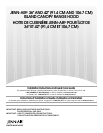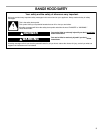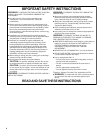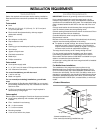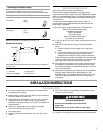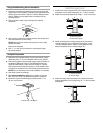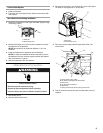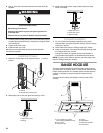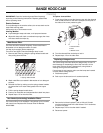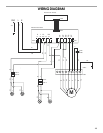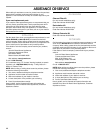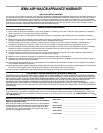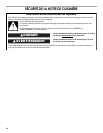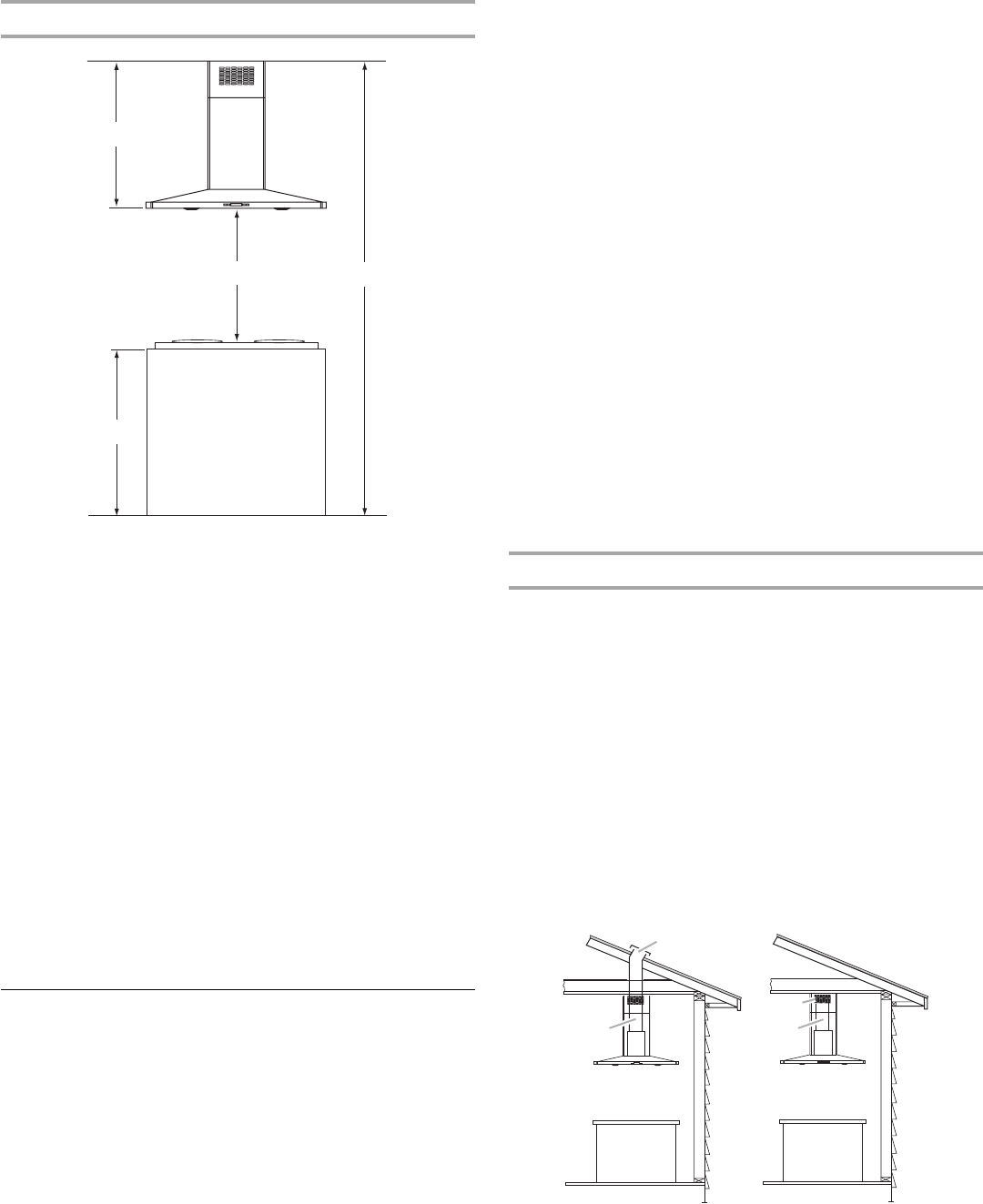
6
Installation Dimensions
IMPORTANT:
Minimum distance “C”: 24" (61.0 cm) from electric cooking
surface.
Minimum distance “C”: 27" (68.6 cm) from gas cooking
surface.
Suggested maximum distance “C”: 36" (91.4 cm)
For vented installations, the chimneys can be adjusted for
ceilings between 7’ 11" (2.41 m) and 9’ 11" (3.02 m).
For non-vented (recirculating) installations, the chimneys can
be adjusted for ceilings between 7’ 11" (2.41 m) and 10’ 3"
(3.12 m).
*NOTE: The range hood chimneys are adjustable and designed to
meet varying ceiling or soffit heights depending on the distance
“X” between the bottom of the range hood and the cooking
surface. For higher ceilings, a Stainless Steel Chimney Extension
Kit Part Number W10272078 is available from your dealer or an
authorized parts distributor. The chimney extension replaces the
upper chimney shipped with the range hood.
Venting Requirements
■ Vent system must terminate to the outside, except for non-
vented (recirculating) installations.
■ Do not terminate the vent system in an attic or other enclosed
area.
■ Do not use 4" (10.2 cm) laundry-type wall caps.
■ Use metal vent only. Rigid metal vent is recommended. Do
not use plastic or metal foil vent.
■ The vent system must have a damper. If the roof or wall cap
has a damper, do not use the damper supplied with the range
hood.
For the most efficient and quiet operation:
■ Use a straight run or as few elbows as possible.
■ Use no more than three 90° elbows.
■ Make sure there is a minimum of 24" (61.0 cm) of straight
vent between the elbows if more than 1 elbow is used.
■ Do not install 2 elbows together.
■ Use vent clamps to seal all joints in the vent system.
■ Use caulking to seal exterior wall or roof opening around the
cap.
■ The size of the vent should be uniform.
Cold Weather Installations
An additional back draft damper should be installed to minimize
backward cold air flow and a thermal break should be installed to
minimize conduction of outside temperatures as part of the vent
system. The damper should be on the cold air side of the thermal
break.
The break should be as close as possible to where the vent
system enters the heated portion of the house.
Makeup Air
Local building codes may require the use of makeup air systems
when using ventilation systems greater than specified CFM of air
movement. The specified CFM varies from locale to locale.
Consult your HVAC professional for specific requirements in your
area.
Venting Methods
This island hood is factory set for venting through the roof.
An 8" (20.3 cm) round vent system is needed for installation (not
included). The hood exhaust opening is 8" (20.3 cm) round.
NOTE: Flexible vent is not recommended. Flexible vent creates
back pressure and air turbulence that greatly reduce
performance.
Vent system can terminate either through the roof or wall. To vent
through a wall, a 90° elbow is needed.
For Non-Vented (recirculating) Installations
If it is not possible to vent cooking fumes and vapors to the
outside, the hood can be used in the non-vented (recirculating)
version, fitting a charcoal filter and the deflector. Fumes and
vapors are recycled through the top grille.
NOTE: Wall venting can be an option for 2-story homes.
A. Ceiling height
B. Hood height from ceiling to bottom of the
range hood: A-C-D=B
C.24" (61.0 cm) minimum to 36" (91.4 cm)
maximum suggested hood height.
D.Countertop height
B
C A
D
Roof Venting Non-vented (recirculating)
A.Roof cap
B. 8" (20.3 cm) round vent
A.Deflector
B.8" (20.3 cm) round vent
A
B
A
B



